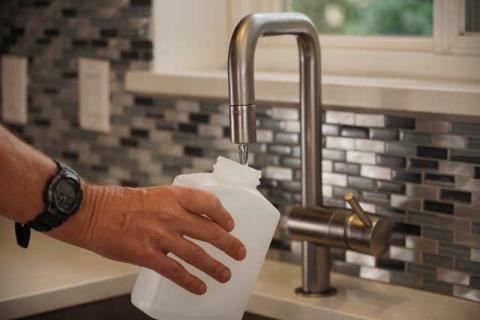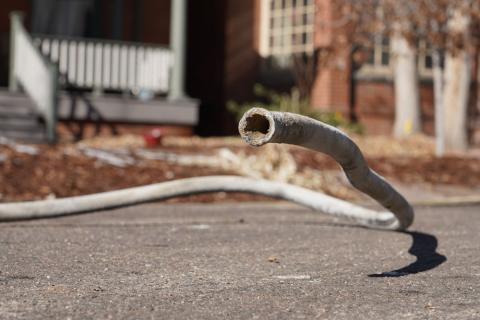
Do I have a lead service line?
Enter your address and the map* will tell you if your home is one of the estimated 64,000 to 84,000 homes with a possible lead service line.
Search by Address*We suggest viewing the map in Google Chrome. If you are on a mobile phone, you may have to reduce your screen size or view in landscape mode (horizontal) for optimal results.
Your top questions, answered.
When will you replace my lead service line?
- By the fall of each year, Denver Water plans to have identified work areas for the following year. Several factors drive when and where service lines are replaced. Denver Water prioritizes communities who are most vulnerable and at-risk from lead exposure, particularly infants and children. Areas with large numbers of facilities that serve these populations, such as schools and day care centers, are prioritized. Other determining factors include areas with the highest concentration of lead service lines, underserved neighborhoods and coordination with other known construction activity.
- Once work areas are identified, Denver Water will determine the timing for individual properties in that work area. Once a property has been identified for a service line replacement, Denver Water will send additional information about the replacement process and next steps. This notification typically comes a month or two before the anticipated replacement date.
- Outside of the Lead Reduction Program, Denver Water will also replace any customer-owned lead service line with a copper water line, at no direct charge to the customer, when discovered during a water main replacement project.
How is Denver Water identifying when and where to replace service lines?
- As part of the Lead Reduction Program, Denver Water has developed a comprehensive inventory showing the location of known and suspected lead service lines in our service area using property records, water tests and visual inspection of service lines.
- Denver Water is using this inventory and a sophisticated model, both of which are constantly being updated with new information, to guide decisions about where to look for lead service lines and the timing of replacing these lines. Each fall, Denver Water will use the model to identify proposed work areas for the following year.
The model determines replacement areas based on several factors, including:
- The likelihood that lead service lines are in a given area.
- How many properties in a given area are identified as either having or likely to have lead service lines.
- Identification of the presence of health impacts associated with lead (e.g., elevated blood lead levels).
- The potential to coordinate replacement work with other efforts to minimize or avoid multiple disruptions to the same community.
- Census information and other studies that can be used to identify areas where the population is at higher risk for negative health consequences from potential lead exposure (e.g., children and expecting families, median income below the federal poverty level, etc.).
- In addition to replacing lead service lines in these neighborhoods, Denver Water is deploying crews to replace lead service lines at critical facilities, including schools, day care centers and other locations, and continue the work needed to expand and improve the location inventory.
- You can find this year’s work areas at denverwater.org/Pipes. Denver Water also has a partial reimbursement program available for customers who choose to replace their service line sooner.



